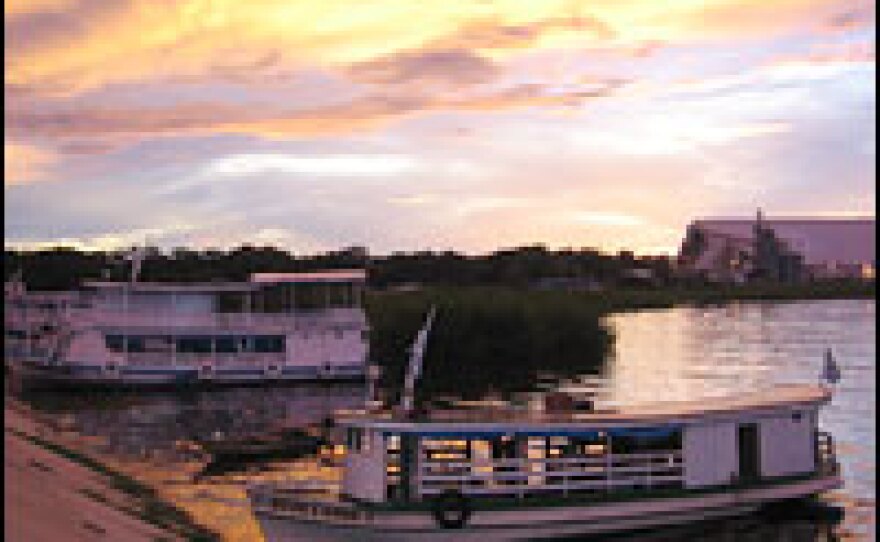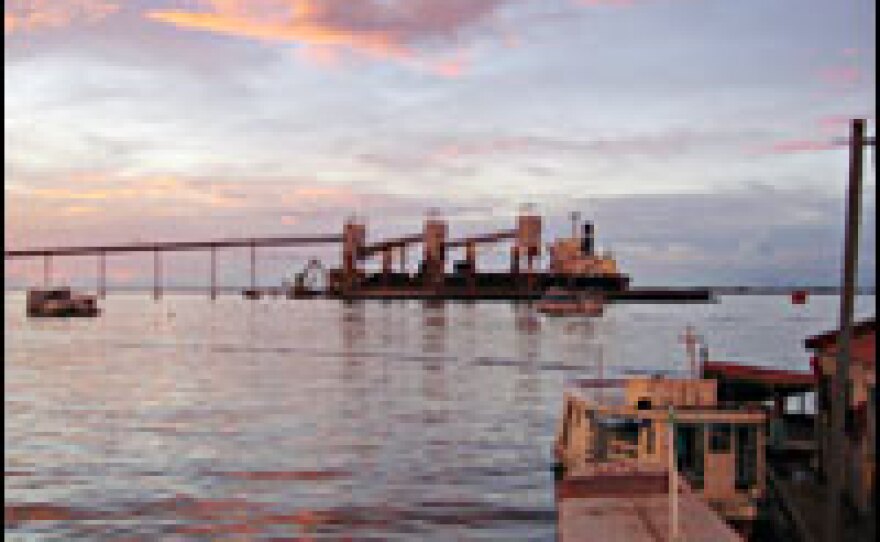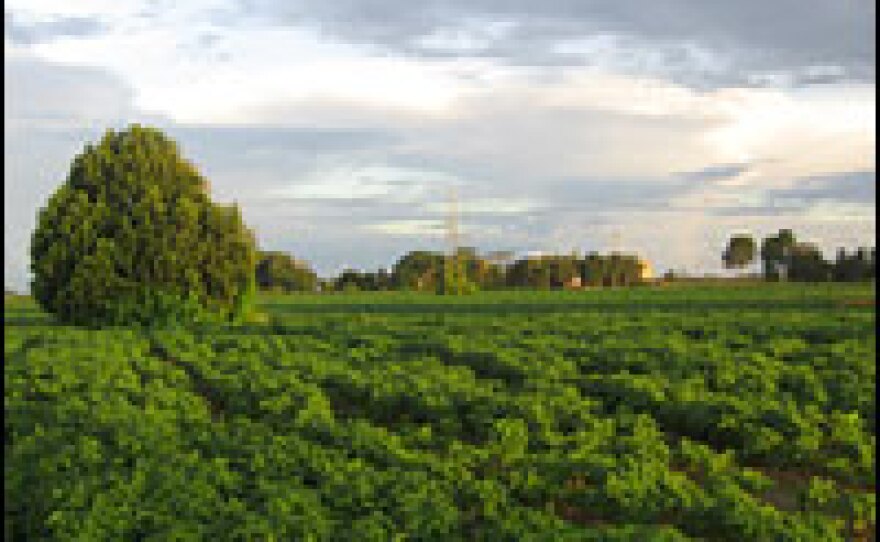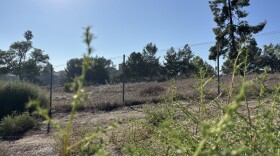


In Brazil, a rich carpet of green rolled over the Amazon River city of Santarem thirty years ago, a vibrant virgin forest. But satellite images of the area of Santarem, 600 miles from the mouth of the Amazon River, show that where carbon-storing trees once stood, cattle ranches and soy farms now proliferate.
Greenpeace estimates that between 2002 and 2005 deforestation in the Amazon has claimed an area twice the size of Switzerland.
An unlikely alliance is working to stop to the destruction: The corporate colossus Cargill has teamed up with the non-profit environmental group The Nature Conservancy in a bid to reduce the footprint of soy farming on land that has been illegally cleared around Santarem.
A Daunting Task
Environmental experts from The Nature Conservancy are trying to teach soy farmers in Santarem to be good stewards of the land. "The first thing," says agronomist Jose Benito Guerrero, "is to restore vegetation cover, after that the animals, then bio-diversity ... will come back."
Cargill's Assistant Vice President for Corporate Affairs Lori Johnson says the farmers don't want to be "the international pariahs."
Government officials concede, however, that not a single farmer in the area is in compliance with Brazil's Forest Code, which is aimed at preserving the world's largest rainforest.
Under Brazilian law, eighty percent of the land in the Amazon, which covers an area larger than India, must be set aside as legal reserve. Only the remaining twenty percent can be used for cultivation. But over the years, weak enforcement of the code has meant impunity for violators.
Guerrero, The Nature Conservancy's man in the field, says Cargill is persuading farmers that they have a choice: get legal or go broke. He says the Amazon is increasingly being pulled into a global market that demands environmentally friendly products, which is, he says, the argument that Cargill is using.
"If the market decides not to buy anymore soy from the Amazon," Guerrero says, "[the farmers] will be affected by this reaction of the market. You know, if you lose the market, you lose everything," he says.
Two-Year Moratorium
As one of the biggest soy traders in Brazil, Cargill took an unprecedented step. At the urging of Greenpeace, which has tracked deforestation around Santarem, Cargill agreed to join a two-year moratorium on the purchase of any soy grown on newly deforested areas. The action effectively removes the incentive for soy farmers to cut down trees.
Cargill's Lori Johnson says the company pushed to make the moratorium industry-wide "so that everyone who buys soy is taking the same stance."
"And that's ultimately what happened," says Johnson. "And one of the interesting things that came out of those discussions is that it has brought together this kind of multi-stakeholder group."
But Not Without a Fight
Before Greenpeace and Cargill started cooperating with each other, they fought bitterly over the company's giant port terminal in Santarem. From there the company ships hundreds of thousands of tons of soy down the Amazon to markets overseas.
Greenpeace accused Cargill, one of the world's largest privately held companies, of being indirectly complicit in deforestation of the area. But the company argues that only a fraction of the soy it transports comes from Santarem, and that most of the land around the region was already cleared before Cargill arrived on the scene in 2003.
Pressure for Small Farmers
Small farmers are now caught between the law and making their farms profitable. Many face the prospect of selling their land and leaving.
Farmer Viteu Holzbach plants soy on 130 of his 260 hectres, cultivating about half the land. But under the long-standing 80:20 rule, he is only entitled to grow on a fifth of the property, or about 50 hectres. He must either return a big chunk of his farm to its natural state, or pay a large chunk to the government which would then set aside a legal reserve elsewhere.
"We feel oppressed. The NGO's call us criminals. But we don't want to work outside of the law. We worked our whole lives honestly," Holzbach says. "And we came here after the forest had been cut down, and just took advantage of what we found."
A Drop in Deforestation
In the last two years Brazil's government says that the rate at which trees are being destroyed has slowed in the Amazon. Analysts credit declining soy prices which have led to a disincentive to plant.
The Nature Conservancy's Guerrero credits groups like Greenpeace and other conservationists who are on the frontlines in the struggle to save the rainforest.
"Because we are doing some work here to put some limits: addressing the problem, confronting the problem, and doing something."
Guerrero expects to see more partnerships like the one between the Nature Conservancy and Cargill multiply as the battle continues over how to balance conservation in the Amazon with economic growth.
Copyright 2022 NPR. To see more, visit https://www.npr.org. 9(MDAzMjM2NDYzMDEyMzc1Njk5NjAxNzY3OQ001))






